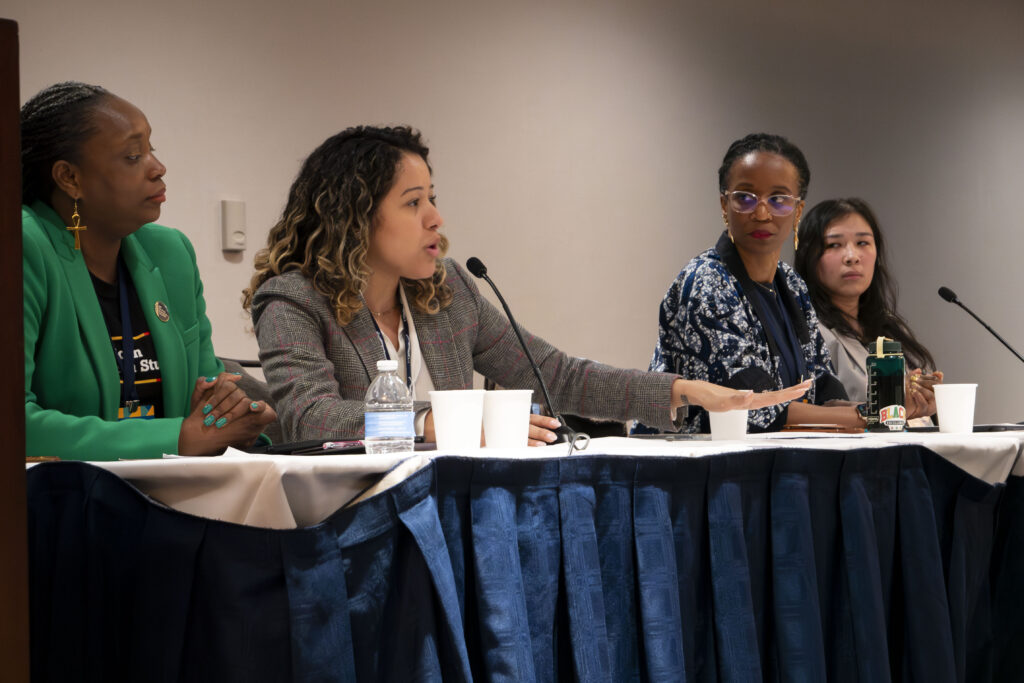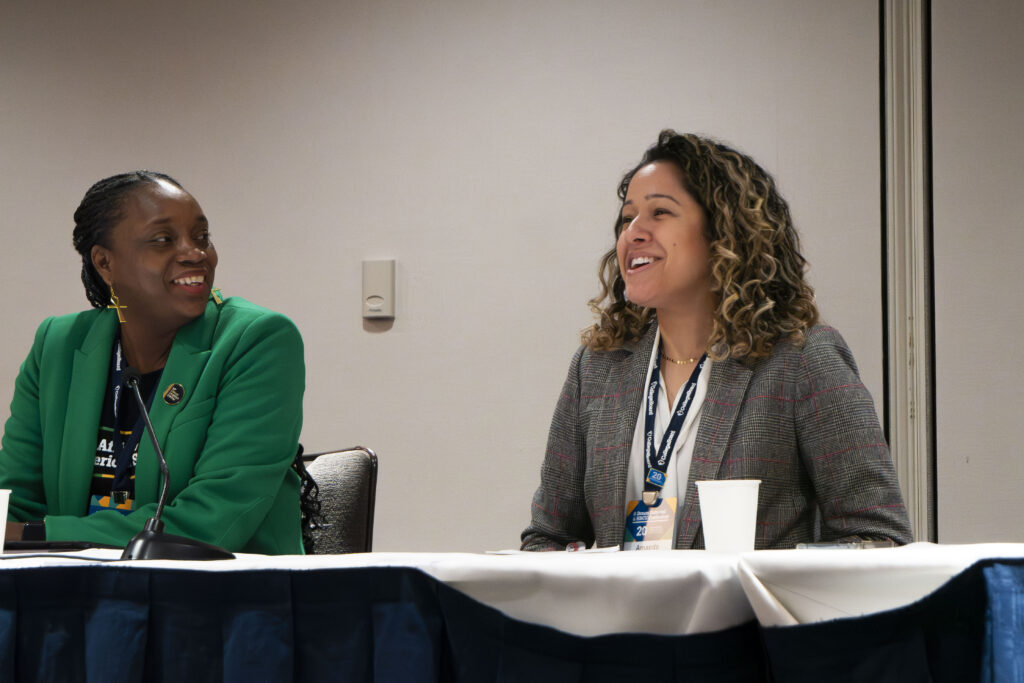
The Biggest Barriers to Access for AP Classes in NYC, and how Data can Break Them
By Brennan LaBrie
What is the biggest barrier to access for underserved and underrepresented students in Advanced Placement classrooms?
For those on EOS’ panel at the College Board’s A Dream Deferred Conference in New York City last week, which centered on leveraging partnerships to address the opportunity gap in AP classes, there was a clear consensus:
Mindsets – and especially adult mindsets.
“The thing that is most deeply concerning to me in terms of barriers for students is adult mindset,” said Terry-Ann Samuel, the Program Director for AP For All. The AP For All initiative, with whom EOS partners, was created by the Mayor of New York City in 2015 with the task of ensuring that every student in the city can access at least five AP courses.

Samantha Chu, Assistant Principal of Brooklyn School for Social Justice, believes the biggest barrier to access for AP classes to be a “lack of belonging” felt by many of her students, who don’t see themselves as fit for advanced classes.
“A lot of my students have said that it’s not for them, that it’s too much or it’s too hard – these preconceptions that they have of what AP is,” Chu said. Often, they write off AP before they get to learn about the opportunities available to them, she added.
These negative mindsets are passed onto students from adults – like teachers, school leaders, and parents – who have preconceived notions of who does and does not belong in AP courses, she said.
“My work with Dr. Yolanda and EOS has been about cultivating the mindset of my students and my staff,” Chu said, pointing to Dr. Yolanda Burnette, EOS’ Partnership Director for NYC and the panel’s moderator. Chu’s school is one of nearly 60 in NYC that partners with EOS to open doors to advanced academic pathways like AP, IB, and dual enrollment.

Mindsets are not easy to change, the panelists stressed. Demographics and faculty in schools can change, but the mindsets of adults in the building can hinder progress, Samuel noted.
As equity-building initiatives like AP For All have expanded in NYC, a new barrier to access has emerged, according to panelist Amanda Paul, Director of Advanced Academic Access at NYC Public Schools.
AP For All’s citywide, top-down approach led to school leaders across the city becoming “versed in the same language” around equity in AP classrooms, Paul said.
This has turned out to be both a benefit and a detriment to the program.
While these leaders now share a vocabulary for sharing best practices and ideas on equity initiatives with each other, they also know exactly what needs to be said to convey success in this work, she said.
“I think now it’s more challenging in the sense that you have to dig a little deeper, and you have to really pay attention to the things that are happening, she said. “Because people know how to talk about the work in a way that can hide the reality of the worst inequities that still exist. People are learning how to gloss it over and not be held accountable for the things that they should be held accountable for.”

The best way to uncover the realities in schools is to look at their data, she said.
“They can say the words, but the data doesn’t lie,” said Samuel, who, like Paul, has reviewed school data that displayed a much less rosy picture than that described by school leaders.
After this digging comes the hard but necessary questions, she added.
“If your demographic has a certain percentage, we will see that in your AP class, right?” She said. “No? Why? Where are our boys? Where our Black boys? Where are our Hispanic boys? Where are our Hispanic and Black children, period, in any of these classes? Those are different kinds of conversations that can be very, very uncomfortable, but it is part of the change that we’re now starting to see. And EOS is really great at having those surveys and forcing schools to have those conversations – let’s look and see what is actually happening so we can dig behind the language that sounds good.”
For Shannah Henderson-Amare, Assistant Principal and AP Coordinator at Brooklyn Prep High School, subpar enrollment numbers in her school’s AP courses, especially for underrepresented and underserved students, often reveal areas of improvement regarding teacher mindsets.

“Students talk with their feet, especially in AP classes,” she said. While teachers might be quick to claim students who drop their course are “not ready,” she frequently finds that it’s the teacher who is failing to create conditions of belonging for these students. She works with them to readjust their perspective on readiness and belonging, and on occasion reassigns them.
“That’s the conversation nobody wants to have,” she said. “But I’m standing firm, because now it’s rooted in data.”
Paul emphasized that the data and insights on students and teachers provided by EOS is critical to bridging the enrollment gaps in NYC schools.
“If there’s something that’s still creating a barrier, we need to know about it to be able to have a conversation about how to change that,” she said, adding that if a school shows positive trends in access to AP courses, their data should be shared with other schools to help guide their efforts.
“It’s not a blame game,” she said. “We can’t blame teachers, we can’t blame administrators. We need to figure out what the gaps are, and provide support. Everything has to come from a place of curiosity, relationship building, and community.”
Brennan LaBrie helps EOS and its partners tell their stories and spread awareness of their work through the mediums of print, audio and video. With a background in local journalism, he loves sharing the stories of the individuals and organizations driving impact in their community and beyond.